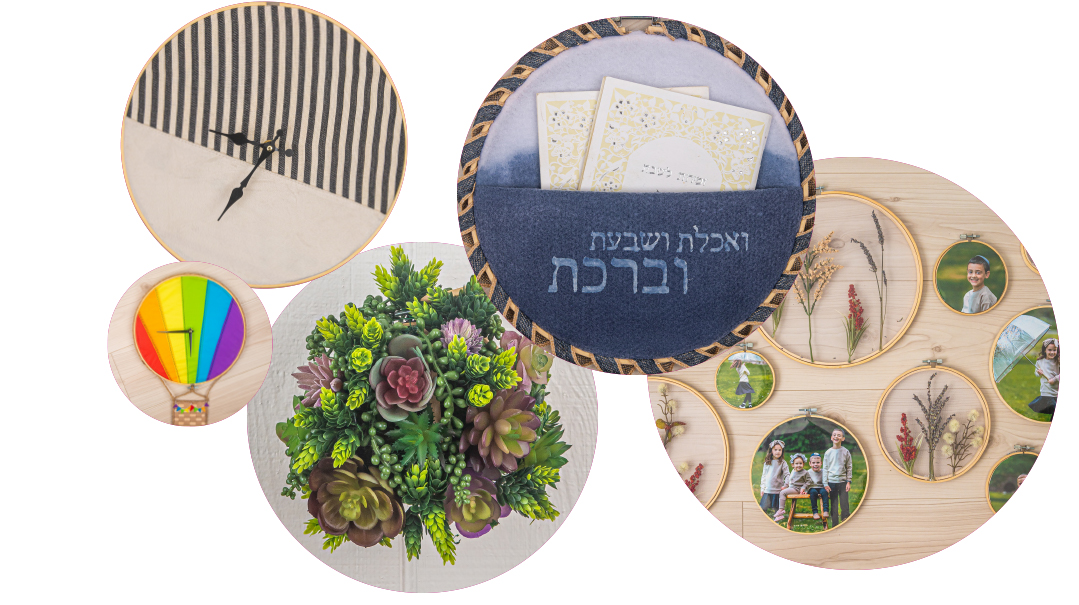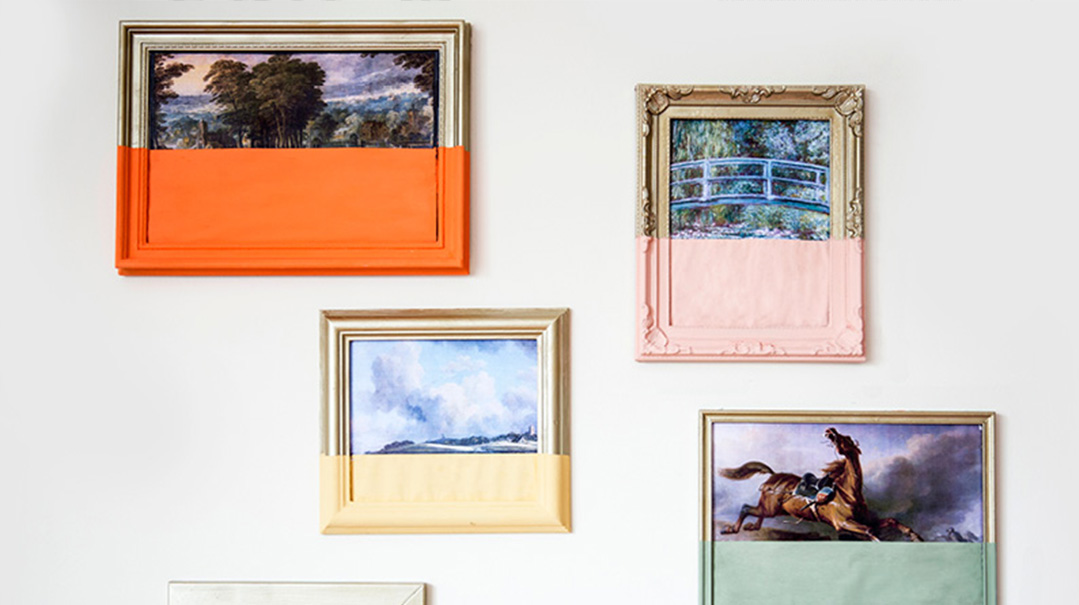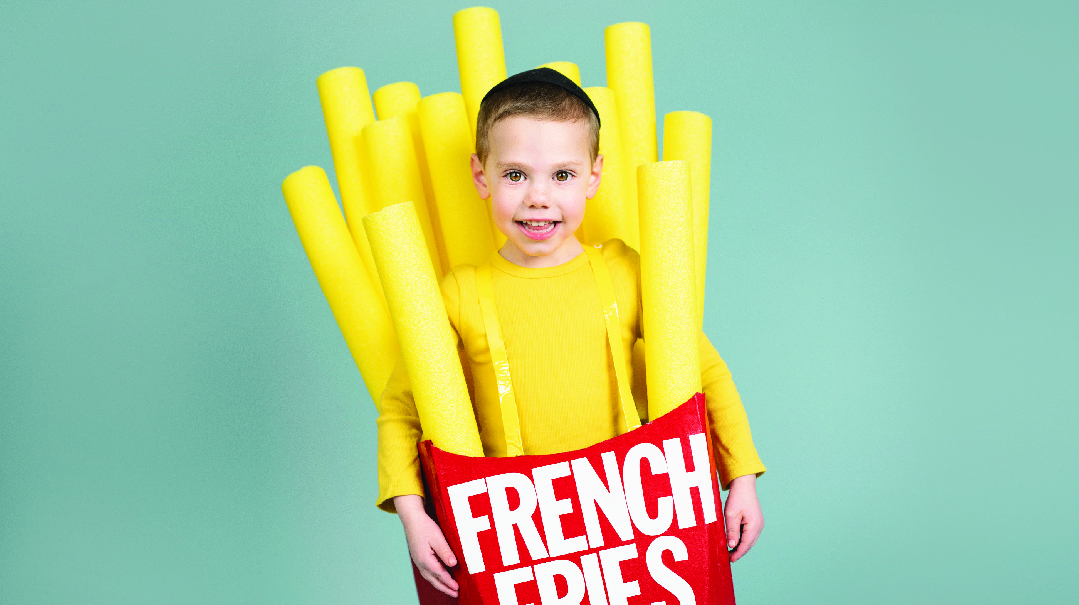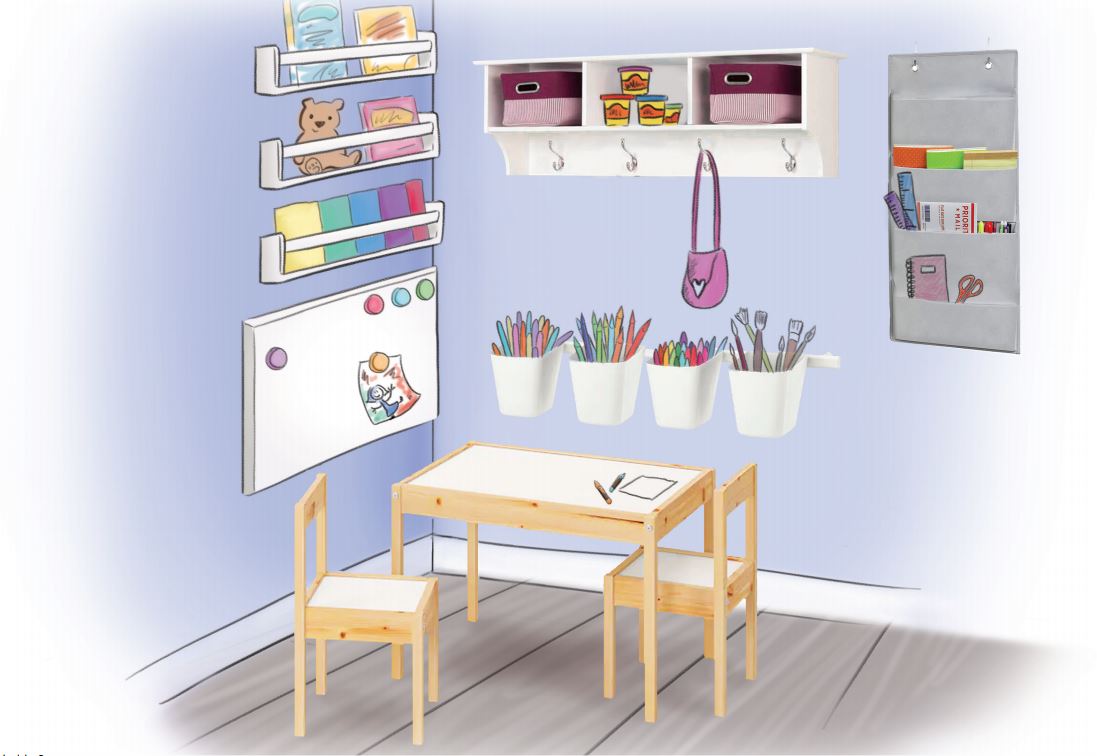Growing with My Garden

Still, not every plant needs to be a superstar. Most will be practical workhorses.

Unlike my indoor living room, the breeze flows and the walls shimmy. My Outdoor Living Room is literally alive with the sights, scents, and sounds of Hashem’s living world (Photos: Naomi Elbinger)
For some people, a successful garden is lush and manicured, admired by the neighbors for its symmetry, worthy of a magazine cover. They have my blessing (and their well-employed gardener’s).
But I’ll be honest: My garden is miles from manicured, nor is it pedicured. It will never appear in any magazine — except, apparently, the one you’re holding in your hands.
I have no such aspirations, either.
For me, the measure of garden success is simply how much time we spend out there enjoying it. When I have a hot drink there on Shabbos afternoon with a friend who can’t contain her amazement that our eight-foot wall of vibrant orange nasturtiums grew out of a single punnet-sized seedling planted five months earlier, that’s success. When my kids eat their mac and cheese dinner during a midsummer’s dusk while excitedly pointing out the butterflies, that’s success. When I host my niece’s bas mitzvah and the guests are captivated by the intoxicating scents in the air, that’s success.
Ordinary life events take on magical qualities when they take place in a beautiful garden.
I’m not alone in these feelings. Due to my reputation as a gardening enthusiast, neighbors and friends often confess that they also long to turn their porch or yard into a green haven.
Unfortunately, they’re usually frustrated:
“I planted 40 pansies but they all got eaten by snails.”
“The beautiful plum tree in our garden died. I think I murdered it.”
“I put carrot seeds in the ground with my kids but they never even sprouted.”
I love these conversations and I’m always happy to dispense helpful advice. How did I gain my wisdom? The hard way, of course.
Let me tell you about my first garden.
Garden Confessions
Before we bought our first home as newlyweds, both my husband and the real estate agent noted that the garden was huge and unwieldy.
The steep lower half was overgrown with wattle trees (enemy number one, if you have allergies) and a towering pine tree that blocked the light and coated the ground in needles. The upper half was an expanse of geraniums lovingly propagated and hand-watered daily by the babushka of the Russian family who was selling the place.
I chose to ignore their concerns.
Since childhood, I’d been devouring gardening books like a famished caterpillar. I felt confident my garden would be lush and green, a soft grassy haven dotted with fruit trees, colorful flowers, and an abundant vegetable patch ripe for salads. I’d loll in the sunshine reading a book or playing with my future children.
And as for the wattle tree dusting the air yellow with its potent pollen pom-poms, I figured that since we both originated in Australia, we’d get along just fine.
The reality turned out quite different.
Despite its grand potential, my first garden’s main fruit was disappointment. The young orange tree I planted in honor of my bechor’s birth withered and died. The raised bed I prepared for growing vegetables became the litter box of the local cats. And my husband suffered hay fever as never before until a burly guy with a chainsaw took care of the wattles.
On the bright side, since the conditions and existing plants were so extremely problematic, it forced me to think creatively and try some new things. And, thank Hashem, some of those proved very successful.
That garden was an excellent if overgrown professor. It taught me a whole lot about gardening in the real world, as opposed to in the books.
These days, I believe that a successful garden does not have to require much time, effort, or budget. You can do most of the work yourself, if you’re ready for a bit of schlepping and that’s your idea of fun.
And the reward of this small investment is huge.
It all starts when we redefine the way we look at our outdoor spaces.
My Living Room Lives
Whatever the size of my outdoor space and whatever its potential, these days I understand that I have to scale back my ambitions 50 percent. And after that, I have to cut back my remaining plans another 80 percent.
Start smaller than small.
When we moved to our current home, despite it having a large wraparound yard, my initial goal was bite sized: Create a small, defined outdoor “room” that we will enjoy often. I redefined the section of my garden that was most accessible from my home as my “Outdoor Living Room.” Just as my indoor living room is used for spending time with family and guests, eating, reading, and working, I use my Outdoor Living Room for the same purposes during the warmer seasons. But unlike my indoor living room, the breeze flows and the walls shimmy. My Outdoor Living Room is literally alive with the sights, scents, and sounds of Hashem’s living world.
Like any other room, my Outdoor Living Room has two essential components: the walls that define it as a room and the furniture that allows it to serve its purpose. If you get these two right, your garden is set for success.
In Praise of Wallflowers
Last week, while visiting a busy thoroughfare in Jerusalem, I stopped at a cafי that had enclosed part of the front sidewalk with meter-high raised beds of wood planted densely with flowers. Sitting there sipping an iced coffee with my sister, a smorgasbord of multicolored petunias in front of my nose, it felt private and tranquil. I hardly noticed the buses and trucks roaring past or the belching gas station right across the road.
This reminded me of the next important lesson I learned about gardening: Don’t plant plants in the ground. Most people plant their flowers, herbs, vegetables, and shrubs way down at ground level or, at best, a few inches up in a so-called “raised bed.” The problem is that your ankles don’t appreciate pretty flowers nearly as much as your nostrils. When they’re so far away from your eyes, your nose, your hands — it’s much harder for you to get close to your plants, to take care of them and to enjoy them.
When you lift plants up in high-rise beds, you create the beautiful living walls of your outdoor room. This concept is so popular with outdoor cafיs for good reason. Borrow it and create your own lovely, useful outdoor room. There is no need for four walls to create an enclosed feel. As with a succah, our outdoor room has two and a half walls, one of which is the wall of our home, with its big glass sliding doors. Opposite that, we have one full-length high-rise bed, planted thickly with herbs and flowers, including several climbers that cover up the dull, scaly leaves of a past-its-prime cypress behind the bed. Then a half-wall has several deep pots of herbs growing along it.
One thing you will notice about this arrangement is that it’s not a lot of growing space. That’s on purpose. I always dream of more planting space, but to start, I focused only on these limited, easy-care high-rise beds. It’s just enough space for this to be easy and fun.
That Jerusalem cafיe had their beautiful wooden beds custom-built by a carpenter. Railway sleepers are another popular option for building high-rise beds, or you can work with the existing structure of your patio. If you’re short on budget or living in a rental, you can buy high-rise beds portable and cheap from Keter and other manufacturers of outdoor plastic furniture. That’s right, they make high-rise garden beds out of plastic and sell them for $50.
So there goes the last of your excuses.
Part of the Furniture
As soon as we set up the walls of our Outdoor Living Room, my family immediately found ourselves spending a lot more time enjoying our garden. We’d sometimes put up a folding table and drag out some chairs and eat meals there too. It was lovely.
Then a visiting friend encouraged me to take it further.
“Before you do another single thing out here,” she said, “get some real outdoor furniture. It will change the way you use this garden.”
It took some time to gather the funds, but I took her advice and visited several large stores, where I found a tremendous selection of outdoor furniture, ranging from cheap to chic. I bought a six-seater outdoor table made of heavy-duty wood-look plastic, with matching armchairs. In particular, I looked for chairs that were comfortable even without cushions, because cushions need to be put away after use. If it’s a three-step process for me to sit outdoors, I’ll spend less time there.
Just as my friend predicted, after we got that furniture, this outdoor area was once again transformed. It truly became another room in our home, used daily in the warmer seasons for ordinary activities: eating; peeling and chopping; doing homework; entertaining; and just sitting around schmoozing. It actually feels like we did a very cheap home extension, because we now have a whole extra room, with particularly breathtaking decor.
Other essential furnishings that will transform your outdoor space into a usable room might include a sunshade or privacy screens if you have close neighbors. A porch swing is on the wish list for us.
Now that we spend so much time in our outdoor room, plant care is even more of a breeze. Pluck out a weed; remove a spent flower head; help a young climber tendril to take hold. Gardening is a series of minute tasks spread out over the days. Outdoor furniture can hold the key to how your garden thrives.
Let’s Talk About Talking Plants
Some people think it’s crazy to talk to your plants, though a true green thumb might protest: “Isn’t it rude to ignore them when they ask me a question?”
Whether or not you admit to conversing with foliage, you definitely need some “talking plants” in your Outdoor Living Room. These plants are so fascinating or beautiful that you find yourself talking about them, even with family and guests so green-deaf they think a geranium is a dangerous substance harbored in Iran.
Here are some types of “Talking Plants” you might grow:
- Outrageously beautiful and prolific flowering plants that amaze and delight you.
- Plants with Jewish significance, such as esrog, hadassim, chazeres (horseradish), plants mentioned in the Talmud. (“Those are lupines. There’s a dessert recipe for them in Maseches Beitzah.”)
- Herbs and vegetables for tea and salad. (“Did you enjoy the cucumber salad? Let’s go meet its mommy.”)
- Very aromatic plants that envelop you in their scent. (We have a Queen of the Night, which is truly ambrosial. Honeysuckle and varieties of jasmine are also popular.)
“Talking Plants” get you out into your garden because they’re so fun to share. They increase the enjoyment and nachas you get from your garden, motivating you to tend to it.
Still, not every plant needs to be a superstar. Most will be practical workhorses.
I won’t recommend specific plants by name here, because not every plant is suitable for every garden. Instead, here are some important general guidelines for picking out plants:
- Some plants are real prima donnas, making exacting demands about humidity levels and soil acidity. I stay away from these drama queens, instead choosing plants that are hardy and suited to my climate. Ask the guy at the local nursery or see what your neighbors are growing successfully. Take note if your growing bed is full sun, half-sun, or full-shade, and choose suitable plants.
- Ideally buy plants from a real nursery with a wide selection, rather than at a flower shop or homewares store with just a few plants on display for gift or decor purposes. You’ll get stronger plants for less money and have more fun buying them. Local nurseries have plants suited to your local climate.
- Since you want your plants to be as close to you and as enjoyable as possible, I recommend taller plants that grow one- to four-feet tall for your living walls. Low growing flowers, such as pansies, won’t contribute to the height of your wall and are hard to see unless you’re standing right over them. (Sorry pansy fans!)
- Plant a mix of annuals (plants that grow for only one season) and perennials (plants that last years). Annuals dress up your garden with showy color, while perennials keep it looking pretty even if you take a break from gardening.
- Avoid planting from seeds. You’ll have to wait a very long time for results and they’ll very often be disappointing, compared to seedlings. If you long for the thrill of watching that tender sprout poke its hopeful head through the soil and unfurl its first leaves, plant seeds in a small pot on your windowsill, not in your growing beds.
Selecting plants for your garden is a combination of head and heart. Once you’ve determined that this is a suitable match for your garden circumstances, then follow your heart toward the plants you personally find stunning, the colors you want to wake up to every morning, the flowers that make your heart skip a beat.
It sounds kind of romantic because it is.
Watch Your Kids Grow
The older I get, the longer I can simply sit and savor the beauty of Hashem’s plant kingdom. But it’s rare to find a kid who’s that excited by flowers and foliage. While natural wonders might not speak to the souls of your youngsters, food always does. If you really want to involve your children in the garden, plant edibles.
Early this spring when I went to the nursery to buy seedlings, I let each of my older kids pick out one edible plant for our garden. My 12-year-old son chose a cantaloupe, my 9-year-old daughter wanted a watermelon, and my 7-year-old daughter bet on butternut squash. I’m not supposed to be a kid anymore, and yet I found myself zeroing in on the zucchini seedlings. Not to mention the cucumbers, tomatoes, and bell peppers.
What these vegetable plants have in common is that they’re dramatic and delicious, which is what kids admire in a plant. They also take a lot of space and are not always the most aesthetic. My 7-year-old’s butternut squash is now 10-feet across, laden with swelling fruit and too ungainly to be photographed, no matter how many angles I tried. So you might not have space or inclination to feature vegetables in your Living Room. We planted ours over by the fence.
Vegetable seedlings cost pennies — we paid NIS 1.80 each (50 cents). What else can you buy for 50 cents that will bring any kind of joy, never mind the months of delight and excitement our vegetable plants are bringing my kids at every stage of growth and development? They’re also learning so much about taking responsibility, how nature works, healthy eating, and the agricultural mitzvos.
If the goal of my garden is that my family and I should spend time out there enjoying it, the edibles play a big role in that. Vegetables thrive in high-rise beds and deep pots — they’re much easier to care for and enjoy, compared to planting in the ground.
If you’re limited on space, let your kids plant smaller vegetable plants among your flower beds. My number-one recommendation is peppers because they’re compact and pretty, as well as delicious. Bell peppers and chili peppers are both easy to grow in the summer, and my girls eat small Tinker Bell peppers like candy.
However, peppers take a long time to mature. For fast results, plant cucumbers and let them climb up a fence or lattice. It’s only four weeks from seedling to harvest. The only problem with cucumbers is you have to pick them daily, because if they overripen, the vine will stop producing. Still, most of us can live with the prospect of fresh organic cukes every day.
The Garden of Emunah
Years ago, I had the bright idea to plant horseradish, thinking home-grown chazeres will stimulate some new questions at our Seder.
In preparation, I read all about horseradish plants, learning that they’re extremely easy and fast to grow. In fact, they’re considered highly invasive and many gardeners avoid them.
I got hold of a root and planted it in my old garden. Some weeks later it sprouted, grew a few feathery leaves, and then stalled. When it eventually withered, I felt so discouraged. Even noxious weeds couldn’t survive my inept ministrations!
This Erev Pesach, I tried again, planting a piece of horseradish root several inches deep in a pot nestled inside my high-rise bed. Within three weeks, its leathery leaves were a foot long! Then they doubled in size the following week! I transplanted it to a deep drum filled with soil and it now forms part of my living room wall. I’m sure any landscape designer would shudder at its lack of grace, but it brings me joy.
As it says in the Talmud Yerushalmi: “She’maamin be’chai olamim ve’zorei’a — One who believes in Hashem, plants.”
On reflection, maybe that’s the ultimate definition of gardening success.
6 Reasons to Plant in High-Rise Beds:
- Soil quality and drainage will never be an issue. Your plants will grow deep, healthy roots in 60 to 80 centimeters of loose soil.
- High-rise beds tend to attract fewer weeds and bugs. Occasional checks for pests happen with little effort because a high garden bed is so easy to see and touch. Plus you’ll easily see if any plants are showing signs of not enough water.
- Save your back and knees from bending over to plant, weed, and pick. And best of all — absolutely no digging ever.
- No need to fear your favorite flowers getting trampled by your favorite children.
- Works perfectly for balconies and patios.
- High-rise flowers are easier to see though the windows, so you’ll enjoy your garden even from indoors.
Naomi Elbinger is involved in running gardening and nature programs for chareidi children across Israel as a volunteer for the non-profit Leshomra. She lives with her family in Ramat Beit Shemesh.
(Originally featured in Family First, Issue 594)
Oops! We could not locate your form.







